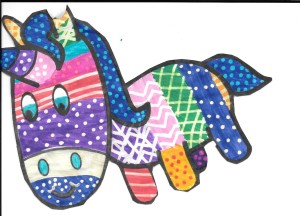Most children will have nosebleeds from time to time, and causes range from hay fever to weather (cold, dry weather dries the membranes in the nose), from a familial trait to no explanation at all. Nosebleeds usually don’t last long and generally a child bleeds from only one nostril.
What to do when a nosebleed occurs? According to an article on the website of the American Academy of Pediatrics, here are the basic ways to control a nosebleed:
- “Stay calm; the nosebleed is probably not serious, and you should try not to upset your child. Your child will pick up on your emotional cues.
- Keep your child sitting or standing and leaning slightly forward. Don’t let him lie down or lean back because this will allow blood to flow down his throat and might make him vomit.
- Don’t stuff tissues or another material into the nose to stop the bleeding.
- Firmly pinch the soft part of your child’s nose—using a cold compress if you have one, otherwise your fingers—and keep the pressure on for a full 10 minutes. Don’t look to see if your child’s nose is bleeding during this time; you may start the flow again.
- If bleeding hasn’t stopped after 10 minutes, repeat the pressure. If bleeding persists after your second try, call your pediatrician or take your child to the nearest emergency department.”
When should you be concerned enough to call your pediatrician or get to an emergency room? The article referenced above lists the guidelines to call the doctor if:
- “Your child is pale, sweaty, or not responding to you.
- You believe your child has lost a lot of blood.
- Your child is bleeding from the mouth or vomiting blood or brown material that looks like coffee grounds.
- Your child’s nose is bleeding after a blow or injury to any part of the head.”
Generally speaking, a nosebleed isn’t serious and you can easily stop it at home. However, check out the advice above if you have concerns.
© MBS Writing Services, 2015, all rights reserved

Artwork by Corinne

